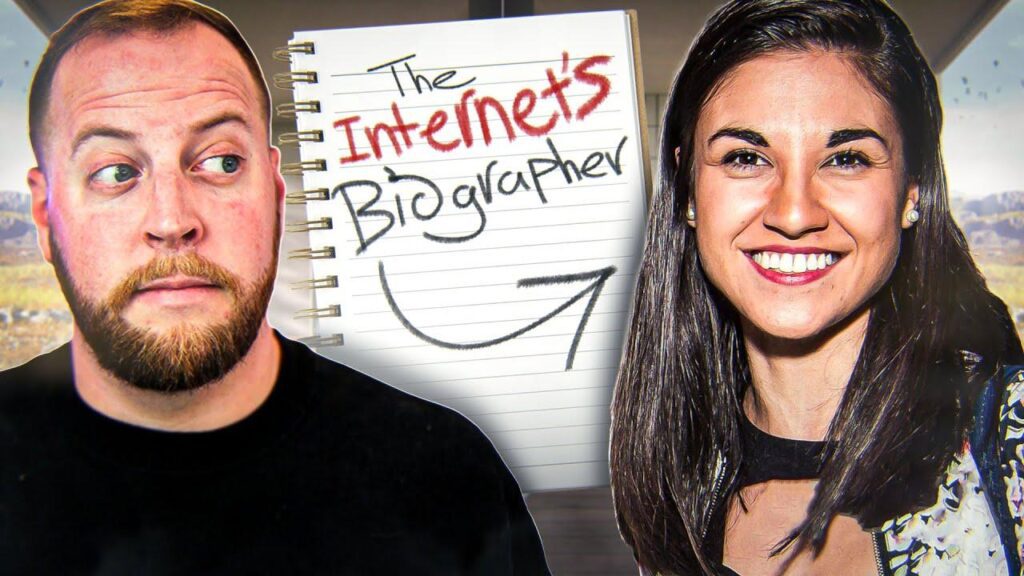
“It is difficult to think of a major industry that AI will not transform.” – Andrew Ng
❓ What You’ll Learn
- How can niche AI models make you more productive?
- Who is crowdsourcing niche AI data?
- Why should you customize existing AI models?
- How to build niche AI models by solving your own problems?
- How to get early customers and feedback?
- Who is building niche AI models in public?
- Why should you open-source your AI model?
- Who built 700+ models with no-code tools?
- How to build an AI clone of yourself?
- Why do tech giants acquire niche AI startups?
💎 Why It Matters
Niche AI models do some tasks better and faster than humans.
🔍 Problem
You want to do specific tasks more accurately and efficiently.
💡 Solution
Niche AI models are fine-tuned to perform well on domain-specific tasks.
🏁 Players
Niche AI Models
- Pi • AI personal assistant
- Runway • AI for video production
- GitHub Copilot • AI for programmers
- Krisp • AI to make meetings more productive
- Character AI • AI to create interactive characters
- Ada • AI for customer support
- Chirp • AI for analyzing speech
AI Model Directories
- Hugging Face • Marketplace for open-source AI models
- Gravity AI • Catalog of free and paid AI models
- Modelplace • Marketplace for image-detection models
AI Modeling Tools
- Amazon SageMaker • Build AI models on Amazon Web Services
- Microsoft AI Builder • Build AI models for Microsoft applications
- Vertex AI • Build AI models on Google Cloud
- Cogniflow • Build AI models with no-code tools
- Replicate • Build open-source models that run in the cloud
- Personal AI • Build an AI model that mirrors you
- Scale Spellbook • Customize existing AI models with your data
🔮 Predictions
- Established companies will acquire niche AI startups to serve specific industries better.
- Microsoft acquired Nuance to automate tasks for healthcare providers.
- Thomson Reuters acquired Casetext to help law firms review documents.
- Accenture acquired Flutura to offer better AI services for clients in the energy, chemicals, metals, mining and pharmaceutical industries.
- Companies with unique user-generated data will look for ways to monetize it.
- Reddit will charge developers to access its API.
- Twitter announced new API pricing which cuts off free access to tweets.
- Stack Overflow plans to charge large tech companies for accessing its answers.
- SaaS companies will build their own niche AI models to improve their core features.
- DocuSign built DocuSign Insight which analyzes contracts.
- Crowdstrike built Charlotte AI which detects cloud security issues.
- Loom built Loom AI which automates video summaries and editing.
- Adobe built Adobe Firefly which generates images and visual effects.
🛠 How to Build Niche AI Models
- Solve your own problems. Chances are others have them too.
- Greg Kamradt built an AI to respond to Twitter replies.
- Dan Shipper built Lennybot to summarize ideas from Lenny’s Newsletter.
- Susan Koch built an AI to help her write a wedding toast for her daughter.
- Use no-code tools to save time, money and energy building your own AI models.
- Hear.com used Levity to build AI models that categorize PDFs.
- ILLA Cloud used My AskAI to build a customer support chatbot.
- LifePack used Obviously AI to build 700+ AI models that forecast their inventory.
- Customize existing AI models to save time and money training your own models from scratch.
- Cohere lets you use your data to customize their pre-built models.
- Generative AI Studio lets you customize and test generative AI models.
- TensorFlow has a tutorial on how to customize pre-built models using your data.
🌱 How to Grow Niche AI Models
- Join relevant communities to get early customers and feedback.
- Alon Talmor launched My AskAI on Product Hunt.
- Jijo John launched TextCraft AI on Indie Hackers.
- Ardy Naghshineh launched Browse AI on Indie Hackers.
- Teach people how your AI model works with blog posts, workshops and short-form videos.
- David Park made a TikTok channel featuring his writing assistant Jenni AI.
- Jasper made The Jasper Blog to help customers use their AI marketing tool.
- Danie Theron published Getting Started with Bloom in the Towards Data Science blog.
- Dan Kulkov wrote about building an AI marketing ideas generator in his Weekly Dan newsletter.
- Build an open-source alternative to proprietary AI models to gain recognition and get community contributions.
- OpenBB is an open-source version of BloombergGPT with over 24,000 stars and 2,000 forks on GitHub.
- Stable Diffusion is an open-source version of Midjourney with over 59,000 stars and 3,900 forks on GitHub.
- GPT Engineer is an open-source version of GitHub Copilot with over 49,000 stars and 7,000 forks on GitHub.
💰 How to Monetize Niche AI Models
- Use paid plans to build a value ladder.
- Descript offers 10x more cloud storage for Pro customers.
- Casetext charges for each legal task but offers unlimited tasks on paid plans.
- Character AI offers faster character responses to Character AI Plus customers.
- Offer enterprise plans for companies that want to access the top features.
😠 Haters
“ChatGPT can already solve niche problems with prompt engineering.”
Sure. But your customers don’t have the time to learn how to prompt ChatGPT. Runway makes high-quality video for creators. Suki automates admin work for doctors. People need tools to solve specific problems without complicated prompts.
“It’s hard to compete with large companies with proprietary data.”
Large companies can’t focus on every niche because they serve the masses. Use open-source AI platforms and access public data directories to solve problems for an underserved niche.
“Building a niche AI model seems hard.”
It depends on what you’re building. You can build useful models by customizing pre-trained models or using no-code tools. Online tutorials and developer communities can help you with anything more complex.
“Niche AI models can still give wrong answers.”
Humans also make mistakes. Keep them focused on the tasks they’re designed for and always verify their output. They’re meant to help you do your job. Not do it for you.
🔗 Links
- Building a Report About Creating and Monetizing Niche AI Models • The Tweet behind this report.
- Building Domain-Specific LLMs: Examples and Techniques • How to build a niche AI model.
- MLOps Landscape in 2023: Top Tools and Platforms • List of tools to help you build your AI model.
📁 Related Reports
- AI Agents • Boost your productivity with AI that makes decisions on your behalf
- ChatGPT • Boost your productivity with AI that helps you code, write, research and more
- Open-Source AI • Build AI faster by learning from each other
- AI-Generated Content • Discover AI tools for generating image, voice and video content
- Virtual AI Companions • Feel connected when friends and family are not around
🙏 Thanks
Thanks to Uwe Dreissigacker, Edward Danilyuk, Harsha MV and Frank Jones. We had a great time jamming on this report.
✏️ Phil researched and wrote this report. Dru and Emin edited this report.
📈 What else?
Trends PRO #0130 — Niche AI Models has more insights.
What you’ll get:
- 21 Niche AI Models (200% More)
- 6 AI Model Directories (100% More)
- 14 AI Modeling Tools (100% More)
- 7 Predictions (133% More)
- 5 Ways to Build Niche AI Models (67% More)
- 7 Ways to Grow Niche AI Models (133% More)
- 4 Ways to Monetize Niche AI Models (100% More)
- 10 Links (233% More)
With Trends Pro you’ll learn:
- (📈 Pro) How to improve your niche AI model?
- (📈 Pro) How to boost accuracy by combining niche AI models?
- (📈 Pro) Where to find high-quality training data?
- (📈 Pro) Why should you use AI-generated data instead of real-world data?
- (📈 Pro) How to earn commissions from sharing AI models?
- (📈 Pro) How to monetize niche AI models?
- (📈 Pro) How will blockchain help to manage access to niche AI data?
- (📈 Pro) How are AI startups using foundation models?
- (📈 Pro) How are YouTubers using niche AI models?
- (📈 Pro) When will we run out of publicly available data?
- And much more…
Get Weekly Reports
Join 54,000+ founders and investors
📈 Unlock Pro Reports, 1:1 Intros and Masterminds
Become a Trends Pro Member and join 1,200+ founders enjoying…
🧠 Founder Mastermind Groups • To share goals, progress and solve problems together, each group is made up of 6 members who meet for 1 hour each Monday.
📈 100+ Trends Pro Reports • To make sense of new markets, ideas and business models, check out our research reports.
💬 1:1 Founder Intros • Make new friends, share lessons and find ways to help each other. Keep life interesting by meeting new founders each week.
🧍 Daily Standups • Stay productive and accountable with daily, async standups. Unlock access to 1:1 chats, masterminds and more by building standup streaks.
💲 100k+ Startup Discounts • Get access to $100k+ in startup discounts on AWS, Twilio, Webflow, ClickUp and more.
Brought to you by the team behind HeadsUp























